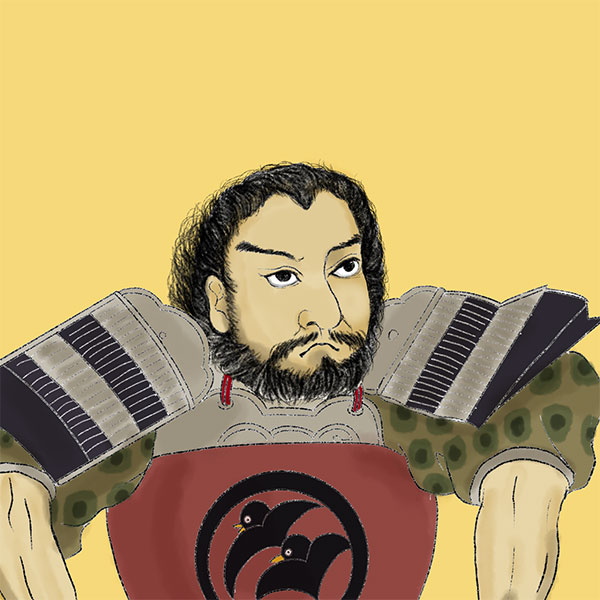- Fukui domainThe Echizen Matsudaira family continued to rule until the Meiji period.
- The Fukui domain ruled the center of what is now Reihoku, Fukui Prefecture. The domain office was Fukui Castle, which was ruled by the Echizen Matsudaira family, whose founder was Hideyasu Yuki, the second son of Tokugawa Ieyasu, from the opening of the domain until the Meiji Restoration. Let's unravel the history of the Fukui clan. From the opening of the Fukui domain 3

Fukui CastleFukui City, Fukui Prefecture
- spring
- summer
- autumn
- winter
- TOP
- Chubu
- Fukui prefecture
- Fukui Castle
| Other name | Kitanosho Castle, Kitanosho Castle, Sho Castle |
|---|---|
| castle construction | 1606 |
| address | 3-17-1 Ote, Fukui City, Fukui Prefecture |
The main stone wall and moat of Fukui Castle remain, but the Ninomaru and Sannomaru have almost disappeared and have become urban areas. The format is Heijo. The territory of Honmaru and Ninomaru is said to be owned by Tokugawa Ieyasu.
- Access to Fukui Castle
- 7 minutes walk from Fukui Station on the JR Hokuriku Main Line.
HISTORYFukui Castle built by Tokugawa Ieyasu's second son
Fukui Castle is a flat castle built in Ote, Fukui City, Fukui Prefecture. The castle was built in its current form by Tokugawa Ieyasu's second son, Hideyasu Yuki, and served as the residence of the Echizen Matsudaira head family throughout the Edo period. Let's unravel the history of Fukui Castle.
- History before the construction of Fukui Castle
- Fukui, where Fukui Castle was built, was once called Kitanosho and had been under the control of the Asakura clan (Echizen Asakura clan) since the Muromachi period. In 1573, when the Asakura clan was defeated by Nobunaga's forces and fell into ruin, Nobunaga appointed former Asakura vassal Toshi Mae to be the guardian of Ichijodani in order to control Echizen, and in addition, Mitsuhide Akechi , Hideyoshi Hashiba, and Kazumasu Takigawa will be placed in Keiyuki Asakura's mansion in Hokusho.
After that, Nobunaga once again gave the land of Echizen to Katsuie Shibata for 490,000 koku. Katsuie Shibata built Kitanosho Castle in 1575. Regarding Kitanosho Castle, there is a record left by the missionary Luis Frois, and according to it, the castle tower had a structure of 7 layers (one theory says 9 layers), and it was said to be a castle as large as Azuchi Castle. It is also written that ``the roofs of the castle and other mansions were all covered with fine stones.'' The castle town was also large, and it is said that it was twice the size of Azuchi, indicating that it was very crowded.
Furthermore, Kitanosho Castle was destroyed in the Battle of Kitanosho Castle in 1583. It is well known that Katsuie Shibata and his wife Ichi committed suicide in this battle. - From Hideyasu Yuki's construction of Fukui Castle to the Edo period
- In 1600, Hideyasu Yuki, the second son of Tokugawa Ieyasu, who was considered the most distinguished in the Battle of Sekigahara, was given Kitanosho for 680,000 koku.
The following year, Hideyasu Yuki gave his vassals a gift and began construction of Fukui Castle. Fukui Castle took about six years to complete with the help of various feudal lords from all over the country. In 1604, during the construction of the castle, Hideyasu Yuki was allowed to use the surname Matsudaira. According to one theory, the Honmaru and Ninomaru areas were called Ieyasu's territory, and feudal lords from all over the country agreed to help by Ieyasu's orders.
Fukui Castle, which was completed with help from feudal lords from all over the country, has a grand castle tower with a height of approximately 37 meters and has four layers and five layers.The outer moat is the Arakawa River on the east, the Asuhane River is the outer moat on the south, and the old Yoshino River is used as the 100-year moat. It had a four-story moat and stone wall that it used. Many turrets and gates were also built, and it is said that it was a majestic and gigantic castle befitting the Tokugawa clan.
In 1624, the third lord of the domain, Tadamasa Matsudaira, changed the name from "Kitanosho" to "Fukui" and later to "Fukui", believing that the "north" in Kitanosho would lead to defeat. According to one theory, the name Fukui originated from a well called ``Fukunoi'' that existed within Kitanosho Castle.
The castle tower was burnt down in 1669, but due to financial difficulties and the shogunate's reservations, the castle was never rebuilt until it was abandoned. - Fukui Castle after the Meiji era
- After the Meiji Restoration, in 1871, the Fukui domain requested the Meiji government to demolish Fukui Castle, and in 1873, it came under the jurisdiction of the Army. Later, in 1879, former feudal retainers leased the site of Fukui Castle and began cultivating it. Furthermore, in 1890, Shigeaki Matsudaira, the last lord of the Fukui domain, bought back the ruins of Fukui Castle, and the agricultural experimental station ``Matsudaira Experimental Farm'' was established within the former castle grounds, which was relocated in 1921. A farm was operated on the Fukui Castle ruins until then.
In 1936, the Matsudaira family, who owned the site of the former Fukui Castle, sold the castle's outer wall of 50,000 tsubo, and the moat and part of the wooden structure were demolished as part of redevelopment. However, most of the remains of Fukui Castle, such as the castle tower and stone walls, still remain today, allowing us to remember what it once looked like. It is also known that the main hall and shoin of Koshozan Zuigen-ji Temple in Fukui City are the relocated remains of the Fukui Castle Honmaru Palace.
Restoration work has been progressing in stages since 2008, including restoration of the Ohiro Bridge, maintenance of Fukunoi, and restoration of Yamazatoguchi Gomon. In addition, events such as ``Fukui Castle Ruins Ohori no Akira'' are held regularly, and it has become a tourist attraction in Fukui City. - summary
- Fukui Castle's castle tower, palace, and other buildings have been lost, but the gates, bridges, and Fukui Well, which is said to be the origin of the word Fukui, have been restored and maintained. Additionally, some of the moat and stone walls remain as they were back then, allowing you to see what they once looked like. In spring, many cherry blossoms bloom, and you can enjoy the combinations of cherry blossoms and moats, and cherry blossoms and stone walls.
Read biographies of people related to Fukui Castle
- Katsuie ShibataOne of the few senior retainers from the time of Oda Nobuhide
- During the Sengoku period, Oda Nobunaga rose rapidly from a general who controlled part of Owari Province to a position where he could rule the country. As he expanded his territory, he employed many capable vassals, but there were also a few vassals who had supported the Oda clan since the time of his father, Nobuhide. One representative example of this was Shibata.

History of the Fukui domain, with Fukui Castle as the domain office
| Domain office | Fukui Castle |
|---|---|
| old area | Kitanosho, Asuwa District, Echizen Province |
| stone height | 320,000 koku |
| Fudai/Tozama | Parent clan |
| main lord | Mr. Matsudaira |
| Estimated population | 280,000 people (first year of the Meiji era) |
Tokugawa Ieyasu's second son, Hideyasu Yuki, was awarded 670,000 koku. The eldest son, Tadanao, indulged in alcoholism and was exiled. His younger brother Tadamasa was welcomed from Takada, Echigo Province.











